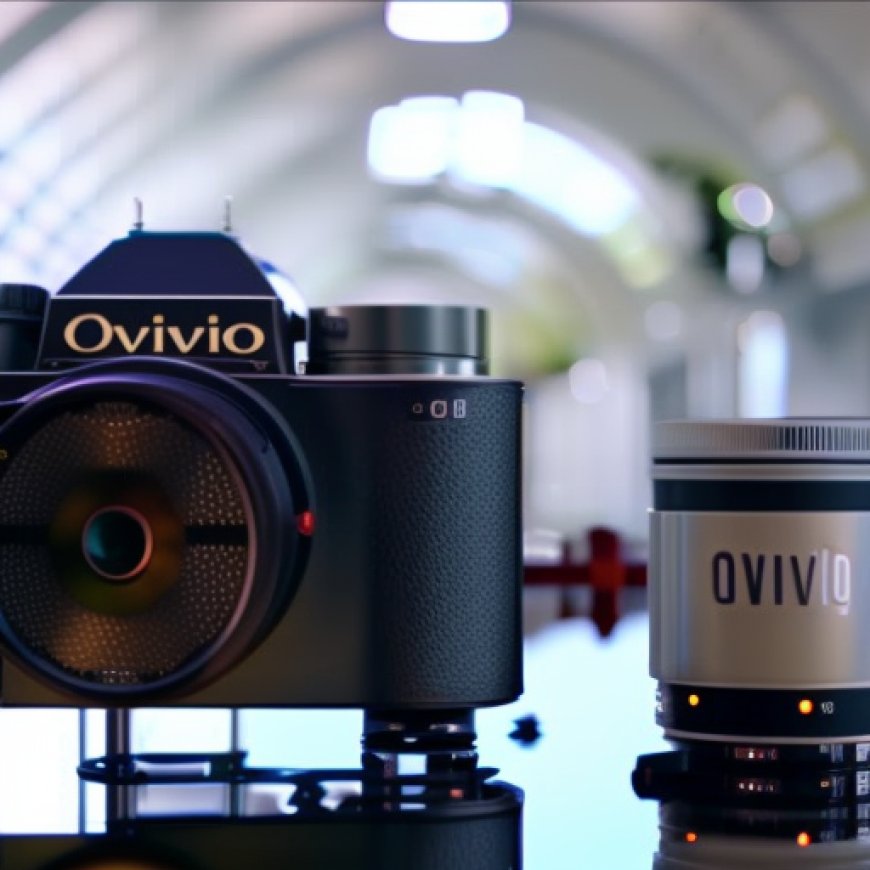Ovivo acquires the LM™ Mixer Technology


Ovivo Acquires LM Mixer Technology from Enersave
Mixer Technology from Enersave

Ovivo has announced the acquisition of the LM Mixer (Linear Motion) technology from Enersave Fluid Mixers Inc. (“Enersave”). Ovivo and Enersave have collaborated successfully for the past 20 years, leveraging our common expertise and constant innovation. For the past 10 years, Ovivo held a license to sell the LM
Mixer (Linear Motion) technology from Enersave Fluid Mixers Inc. (“Enersave”). Ovivo and Enersave have collaborated successfully for the past 20 years, leveraging our common expertise and constant innovation. For the past 10 years, Ovivo held a license to sell the LM Mixer technology in North America. Today, Ovivo acquires the LM
Mixer technology in North America. Today, Ovivo acquires the LM Mixer technology, including its patents and know-how. This acquisition will enable Ovivo to expand its target markets globally with this innovative technology and explore future innovations and opportunities for biosolids management and resource recovery.
Mixer technology, including its patents and know-how. This acquisition will enable Ovivo to expand its target markets globally with this innovative technology and explore future innovations and opportunities for biosolids management and resource recovery.
Enhancing Sustainable Development Goals
Anaerobic digestion is one of the key processes in biosolids management. Digester mixing is essential for maintaining active biological volume and preventing operational disruptions that can lead to costly downtime. The LM Mixer technology is a highly efficient, low-energy mixing system compared to other digester mixing technologies. With a design that prevents the formation of rags and allows low-cost maintenance, this technology is ideal for achieving optimal mixing efficiency and correspondingly increasing biogas generation.
Mixer technology is a highly efficient, low-energy mixing system compared to other digester mixing technologies. With a design that prevents the formation of rags and allows low-cost maintenance, this technology is ideal for achieving optimal mixing efficiency and correspondingly increasing biogas generation.
Expanding Global Reach
Acquiring the LM Mixer technology enhances Ovivo’s comprehensive portfolio in anaerobic digestion and further solidifies our position as the leader in biosolids management and resource recovery. The LM
Mixer technology enhances Ovivo’s comprehensive portfolio in anaerobic digestion and further solidifies our position as the leader in biosolids management and resource recovery. The LM Mixer has been successful for our North American clients, and we are pleased to be in a position to offer it worldwide. We would like to thank Enersave for their great collaboration and for entrusting Ovivo with the continuous development of this innovative technology,” says Hiren Trivedi, Senior Vice President – Ovivo Municipal/Industrial Division.
Mixer has been successful for our North American clients, and we are pleased to be in a position to offer it worldwide. We would like to thank Enersave for their great collaboration and for entrusting Ovivo with the continuous development of this innovative technology,” says Hiren Trivedi, Senior Vice President – Ovivo Municipal/Industrial Division.
Additional Sustainable Solutions
Besides conventional aerobic and anaerobic digestion technologies, Ovivo offers their clients some unique options like DigestivorePAD post-aerobic digestion system, LysoTherm
post-aerobic digestion system, LysoTherm Thermal Hydrolysis systems, UltrastoreTM membrane gas holders, EloVac® struvite precipitation technology, and various Varec BiogasTM conditioning and upgrading systems for biosolids management, resources recovery, and biogas management.
Thermal Hydrolysis systems, UltrastoreTM membrane gas holders, EloVac® struvite precipitation technology, and various Varec BiogasTM conditioning and upgrading systems for biosolids management, resources recovery, and biogas management.
SDGs, Targets, and Indicators
| SDGs | Targets | Indicators |
|---|---|---|
| SDG 6: Clean Water and Sanitation | 6.3: Improve water quality by reducing pollution, eliminating dumping, and minimizing release of hazardous chemicals and materials | – No specific indicators mentioned in the article |
| SDG 7: Affordable and Clean Energy | 7.2: Increase the share of renewable energy in the global energy mix | – No specific indicators mentioned in the article |
| SDG 9: Industry, Innovation, and Infrastructure | 9.4: Upgrade infrastructure and retrofit industries to make them sustainable, with increased resource-use efficiency and greater adoption of clean and environmentally sound technologies and industrial processes | – No specific indicators mentioned in the article |
| SDG 12: Responsible Consumption and Production | 12.4: By 2020, achieve the environmentally sound management of chemicals and all wastes throughout their life cycle, in accordance with agreed international frameworks, and significantly reduce their release to air, water, and soil to minimize their adverse impacts on human health and the environment | – No specific indicators mentioned in the article |
| SDG 13: Climate Action | 13.3: Improve education, awareness-raising, and human and institutional capacity on climate change mitigation, adaptation, impact reduction, and early warning | – No specific indicators mentioned in the article |
| SDG 15: Life on Land | 15.9: By 2020, integrate ecosystem and biodiversity values into national and local planning, development processes, poverty reduction strategies, and accounts | – No specific indicators mentioned in the article |
1. Which SDGs are addressed or connected to the issues highlighted in the article?
- SDG 6: Clean Water and Sanitation
- SDG 7: Affordable and Clean Energy
- SDG 9: Industry, Innovation, and Infrastructure
- SDG 12: Responsible Consumption and Production
- SDG 13: Climate Action
- SDG 15: Life on Land
2. What specific targets under those SDGs can be identified based on the article’s content?
- Target 6.3: Improve water quality by reducing pollution, eliminating dumping, and minimizing release of hazardous chemicals and materials
- Target 7.2: Increase the share of renewable energy in the global energy mix
- Target 9.4: Upgrade infrastructure and retrofit industries to make them sustainable, with increased resource-use efficiency and greater adoption of clean and environmentally sound technologies and industrial processes
- Target 12.4: By 2020, achieve the environmentally sound management of chemicals and all wastes throughout their life cycle, in accordance with agreed international frameworks, and significantly reduce their release to air, water, and soil to minimize their adverse impacts on human health and the environment
- Target 13.3: Improve education, awareness-raising, and human and institutional capacity on climate change mitigation, adaptation, impact reduction, and early warning
- Target 15.9: By 2020, integrate ecosystem and biodiversity values into national and local planning, development processes, poverty reduction strategies, and accounts
3. Are there any indicators mentioned or implied in the article that can be used to measure progress towards the identified targets?
No specific indicators are mentioned or implied in the article to measure progress towards the identified targets.
4. SDGs, Targets, and Indicators
| SDGs | Targets | Indicators |
|---|---|---|
| SDG 6: Clean Water and Sanitation | 6.3: Improve water quality by reducing pollution, eliminating dumping, and minimizing release of hazardous chemicals and materials | No specific indicators mentioned in the article |
| SDG 7: Affordable and Clean Energy | 7.2: Increase the share of renewable energy in the global energy mix | No specific indicators mentioned in the article |
| SDG 9: Industry, Innovation, and Infrastructure | 9.4: Upgrade infrastructure and retrofit industries to make them sustainable, with increased resource-use efficiency and greater adoption of clean and environmentally sound technologies and industrial processes | No specific indicators mentioned in the article |
| SDG 12: Responsible Consumption and Production | 12.4: By 2020, achieve the environmentally sound management of chemicals and all wastes throughout their life cycle, in accordance with agreed international frameworks, and significantly reduce their release to air, water, and soil to minimize their adverse impacts on human health and the environment | No specific indicators mentioned in the article |
| SDG 13: Climate Action | 13.3: Improve education, awareness-raising, and human and institutional capacity on climate change mitigation, adaptation, impact reduction, and early warning | No specific indicators mentioned in the article |
| SDG 15: Life on Land | 15.9: By 2020, integrate ecosystem and biodiversity values into national and local planning, development processes, poverty reduction strategies, and accounts | No specific indicators mentioned in the article |
Source: smartwatermagazine.com








